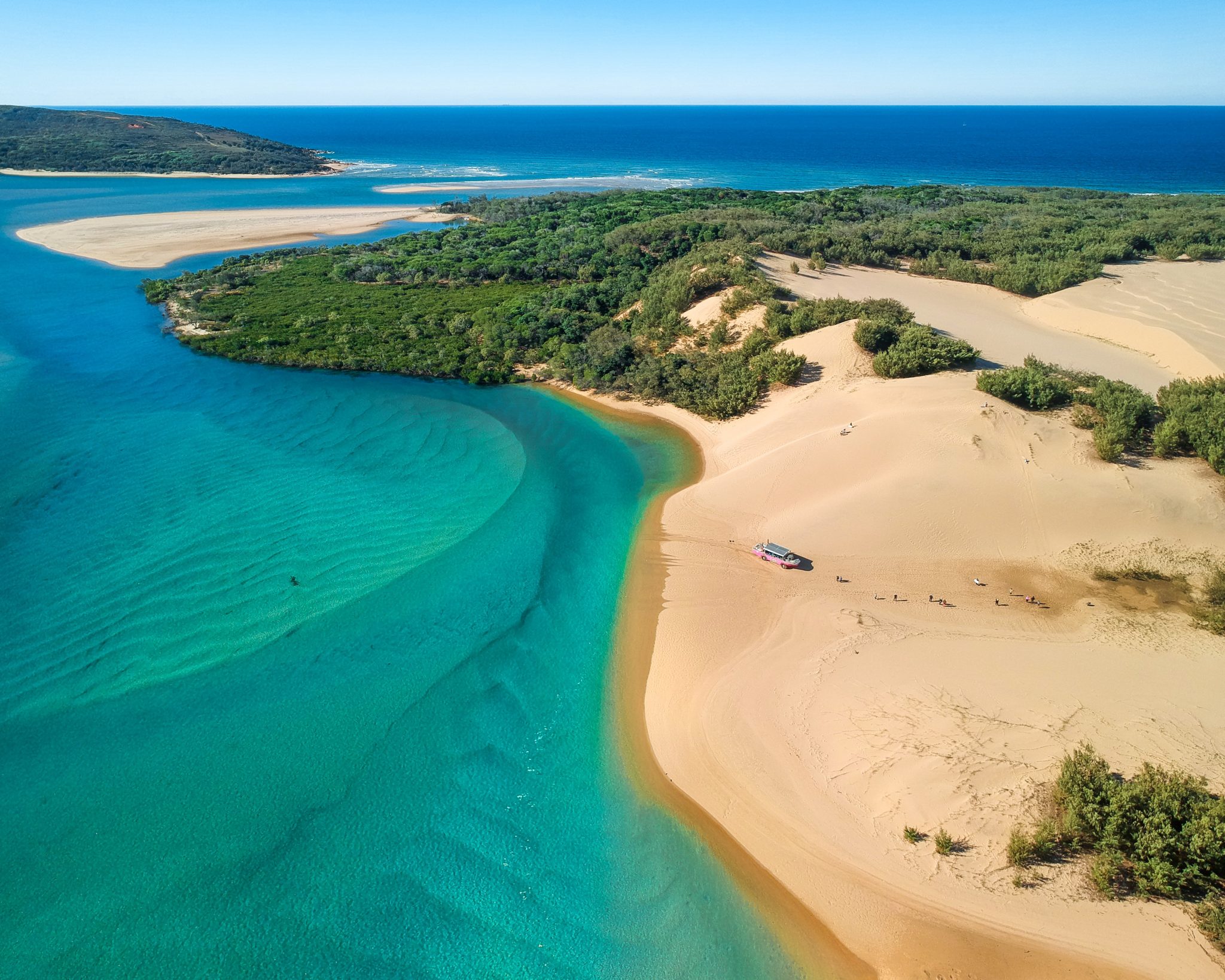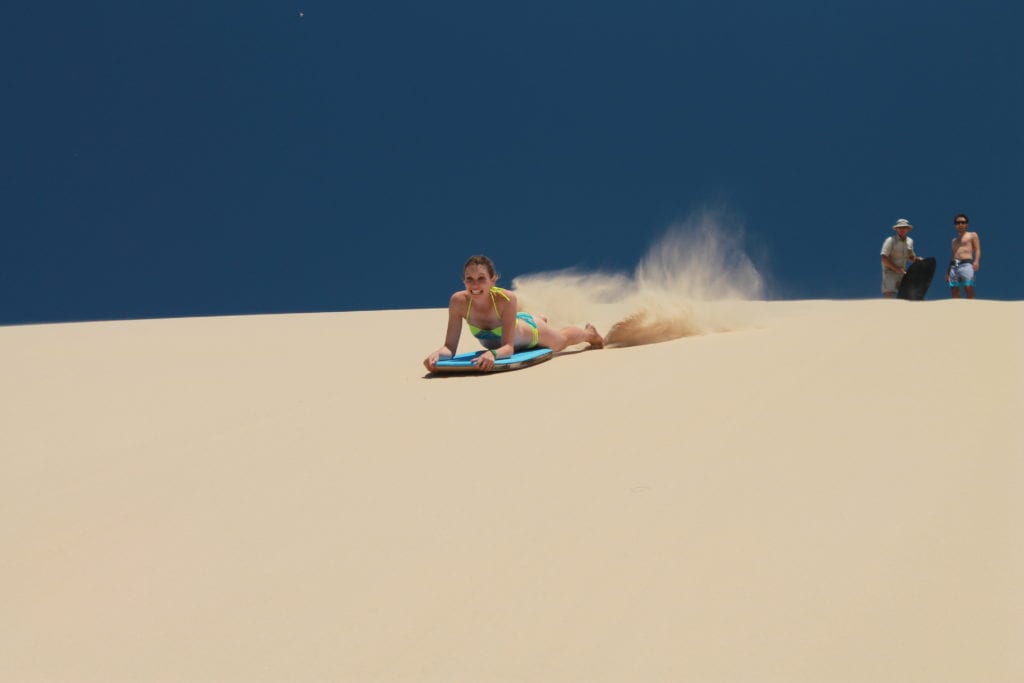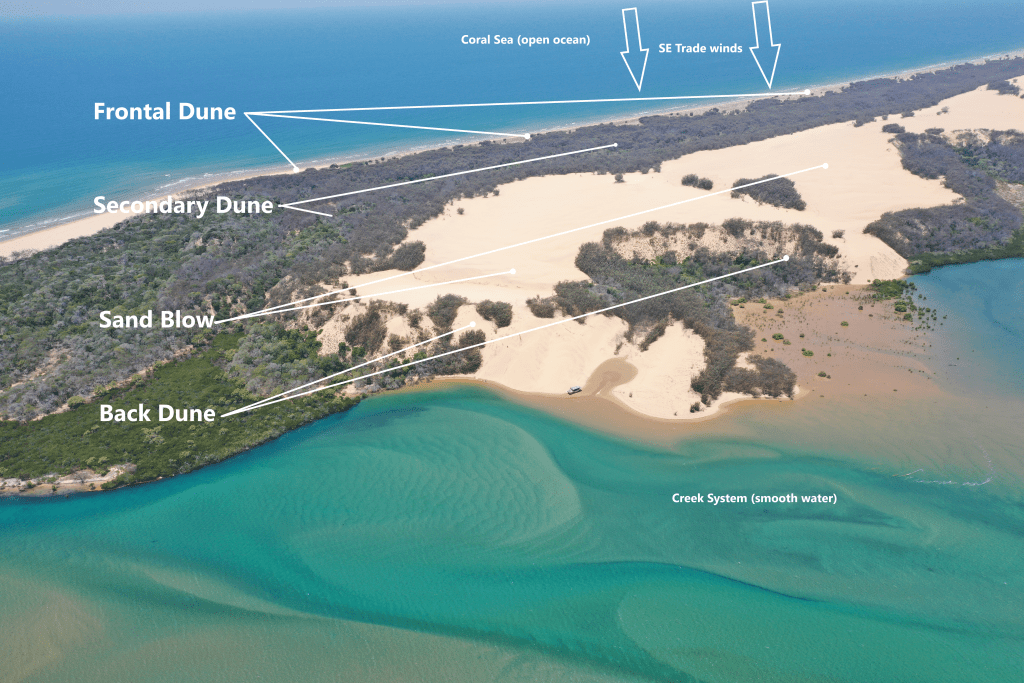10 Jun Protecting Our Dunes

Protecting Our Dunes: Understanding the Difference
At 1770 LARC! Tours, we believe in the importance of preserving our natural landscapes, and today we want to shed light on a crucial topic: the difference between our sandboarding dunes and the dunes on our local main beach in Agnes Water. While sandboarding provides thrilling adventures, it’s essential to be aware of the delicate nature of our coastal dunes and the vital role they play in protecting our shoreline.
Frontal Dunes: Guardians of the Shoreline
The dunes on Agnes Water main beach are known as frontal dunes. These sand formations act as a barrier, safeguarding the shoreline from erosion and the forces of the sea and wind.
How do they accomplish this? Vegetation, thriving on these dunes, plays a crucial role in holding the sand together. When rough seas and strong winds strike, the vegetation acts as a stabilising force, preventing the dunes from crumbling.
The Importance of Coastal Vegetation
Native coastal vegetation demonstrates remarkable resilience in the face of high winds, salt spray, and sandblasting. It not only protects the dunes but also provides essential food and nesting areas for animals including turtles and migratory birds. Moreover, these plants play a crucial role in trapping sand, which can help replenish a beach following erosion events. Their presence is vital for maintaining our coastline.
Back Dunes and Responsible Sandboarding
On our sandboarding adventures, we venture into a different realm – the back dunes. These dunes were formed by the backflow of sand from a sand blow and are nestled within a creek system. They are well established, solidly built, and have hardly changed in the last 29 years that we have been in operation. Unlike frontal dunes, these back dunes face away from the trade winds and are shielded from direct exposure to the open ocean.
The specific location we choose on the back dunes for sandboarding experiences is an overflow point, where sand consistently cascades over the edge and down the back. As a result, vegetation growth in this area is limited.
The Need for Environmental Stewardship
Join us in protecting our precious dune vegetation. You can volunteer with a local group – Local Hands for Nature as they conduct a dune vegetation planting event, contributing to the regeneration of our coastal dunes. Stick to official coastal tracks while exploring to minimise disruption and irreversible damage. Spread the word, educate others, and inspire responsible practices. Together, we can make a lasting difference for our coastal ecosystem. Let’s preserve the beauty and balance of our dunes for generations to come.
Need for Speed
And if you feel the need to sandboard here’s where you can do it in Queensland:
- Carlo Sand Blow – Rainbow Beach
- Tangalooma Desert – Moreton Island
- Kirrar Sand Blow – K’gari
- Big Red – Birdsville
- Middle Island – 1770 LARC! Tours



Susan Moran
Posted at 17:59h, 10 JuneThank you so much for this explanation. We are grateful for your help in getting the word out about dune protection
Antony Lynch
Posted at 00:52h, 12 JuneExcellent explanation.
The more our community is educated about our environment the better chance we have of preserving it for future generations .knowledge is the key to success .
Thank you and keep up the good work .